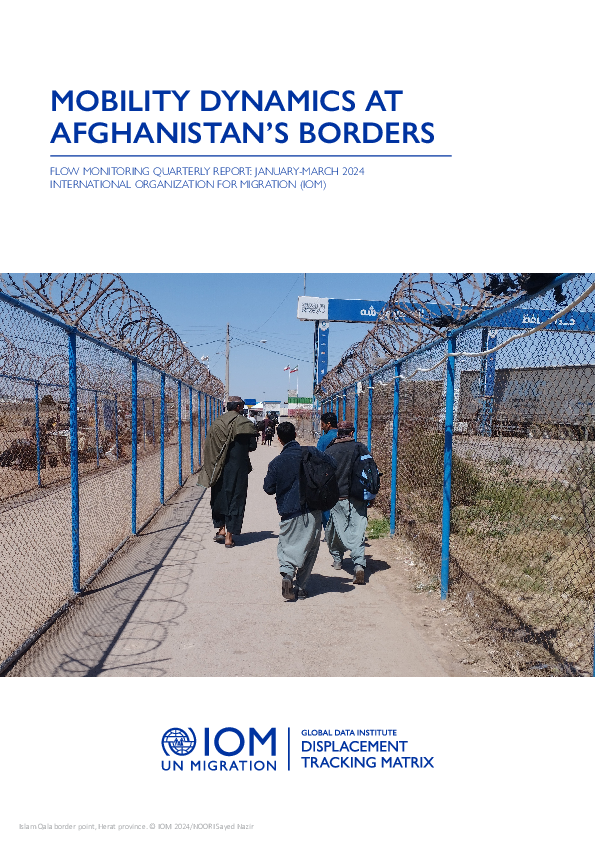-
Countries
-
Data and Analysis
-
Special Focus
-
Crisis Responses
Afghanistan - Flow Monitoring Quarterly Report (January - March 2024) [ENG]

Contact
[email protected]
Language
English
Location
Afghanistan
Period Covered
Jan 10 2024
Mar 31 2024
Activity
- Survey
- Flow Monitoring Survey
- Flow Monitoring
Over the course of decades marked by conflict, Afghanistan has experienced significant movement across its borders with neighboring countries the Islamic Republic of Iran and Pakistan. This movement, influenced by linguistic, geographical, and economic factors, has played a crucial role in shaping regional dynamics and fostering cultural ties between these countries. With 4.5 million Afghan nationals currently living in the Islamic Republic of Iran and 3.2 million currently living in Pakistan1, Afghan nationals not only seek economic opportunities, international protection and safety in these countries, but often visit family or participate in short-term travel for health and other reasons. In late 2023, policies and statements by officials in both the Islamic Republic of Iran and Pakistan called for the expulsion of undocumented foreigners, the majority of whom are Afghan nationals. Developments such as these recent policies targeting Afghan migrants have impacted movements to Afghanistan, as seen late last year when returns from Pakistan increased following the announcement of the “Illegal Foreigners’ Repatriation Plan (IFRP),” setting a deadline for unregistered or undocumented foreigners to voluntarily return to their countries or face deportation.
In response to these recent movements, IOM Afghanistan re-launched its DTM Flow Monitoring (FM) activity at the beginning of 2024 to provide critical insights into current mobility dynamics at Afghanistan’s borders. Flow Monitoring is designed to track the scale and characteristics of human mobility along the borders, including volume, intended destinations, reasons for movement, and intended lengths of stay. From January to the end of March 2024, DTM counted 567,411 individuals entering Afghanistan, 406,919 leaving Afghanistan, and interviewed 49,441 regarding their reasons for movement and intentions. The following report provides findings from DTM’s Flow Monitoring exercises for the first three months of data collection, examining trends and profiles among inflow and outflow groups to inform better targeted response mechanisms.
The report is structured in four sections. The first section, “Cumulative Flow Trends,” gives an overview of the total inflow and outflow numbers and trends between January and March. This section is linked to DTM’s Flow Monitoring Counting exercise (see details in “Methodology and Limitations”). The second and third sections, “Mobility Dynamics: The Islamic Republic of Iran” and “Mobility Dynamics: Pakistan” explore findings from interviews with people leaving and entering Afghanistan via borders with the Islamic Republic of Iran and with Pakistan, respectively. These sections are followed by “Mobility Dynamics: Conclusions” which summarizes and analyzes the findings from the interviews. These last three sections are linked to DTM’s Flow Monitoring Surveys exercise (see details in “Methodology and Limitations”).